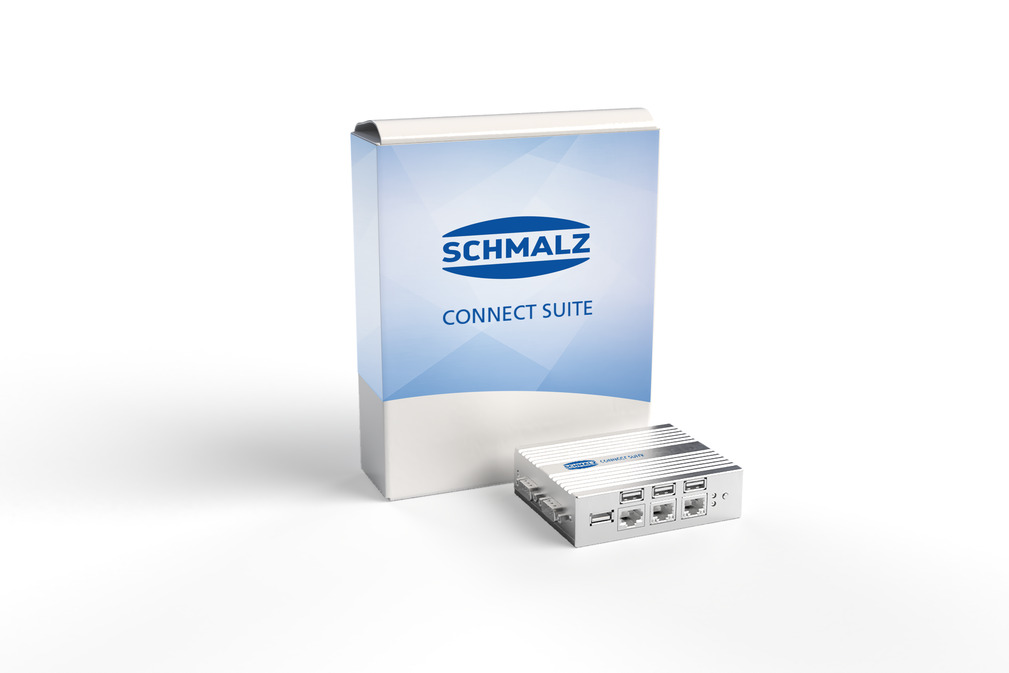
Schmalz Connect Suite
- IoT software
- IO-Link compatible
- Hardware with integrated Ethernet connection
Predictive maintenance is a modern maintenance strategy in which the condition of machines and systems is continuously monitored and analyzed with the help of predictive analytics, artificial intelligence (AI) and machine learning. The aim is to reduce downtime, avoid stoppages and extend the service life of machines.
In contrast to reactive maintenance (only repairing when something breaks) and preventive maintenance with fixed intervals, predictive maintenance relies on condition monitoring and real-time data analysis. This allows maintenance measures to be initiated proactively and at exactly the right time.
Predictive maintenance is based on the continuous recording of machine data obtained via IoT sensors. Various parameters such as vibrations, temperature, pressure and audible signals are monitored. The collected data is then analyzed using machine learning algorithms. In this way, the system recognizes patterns and anomalies and creates predictive models that indicate when a component is likely to fail. This allows spare parts to be installed in good time, maintenance to be seamlessly integrated into the production process and unplanned downtime to be avoided.
However, the implementation of predictive maintenance is complex. Companies are faced with the challenge of collecting and processing large amounts of high-quality data (big data), defining suitable limit values for load and wear and building a powerful data infrastructure. In addition, digital models of the machines must be developed, AI algorithms must be trained and the solution must be integrated into existing maintenance processes. Only through the interaction of these factors can predictive maintenance develop its full potential.
Predictive maintenance is used in many industries. In production and manufacturing, it optimizes maintenance processes and lowers costs. In mechanical engineering, it is a core component of Industry 4.0 standards. In the automotive industry, it helps to avoid unplanned repairs, while in aviation and rail transport it increases the safety and availability of vehicles and systems. It also plays a central role in the energy industry (e.g. wind turbines).
With increasing digitalization, IoT networking and the use of AI-supported data analysis, predictive maintenance is becoming the standard in the smart factory. It is considered one of the most important building blocks of Industry 4.0, as it increases productivity, lowers costs and makes companies fit for the future.

Faster, more flexible, more sustainable: experience how the classic art of engineering and state-of-the-art digital technologies come together - from virtual planning to the digital twin.

Seamlessly digital: Schmalz supports you with smart solutions along the entire life cycle.